On June 28, 2024, Zero Run C16 officially went public. After the press conference, we interviewed Zhu Jiangming, Chairman of Zero Run Technology, and Cao Li, Senior Vice President of Zero Run Technology. During the interview, the two leaders stated that Zero Run insists on approaching excellent products in terms of performance and product power indefinitely, but in terms of price, the concept is to be like the Uniqlo of the automotive industry, pricing based on cost, providing users with higher configuration, better quality, and affordable products. No matter how tempting it is, how high the gross profit is, or how big the space is, Zero Run will always adhere to the idea of treating cars as consumer goods for the masses, and will continue to uphold this concept in the future.

Interview Transcript: Reporter: How can Lixiang C16 achieve dual-drive between sincerity in pricing and full configuration, as CEO Zhu mentioned before that we want to be the Uniqlo of the automotive industry, how does Lixiang achieve cost-effectiveness? Zhu Jiangming: There are three points. First, 60% of our components are self-developed and self-made, saving costs and giving profits to users, about 6% cost space in the whole vehicle. Second, Lixiang uses many innovative technologies, such as platformization, with 88% shared components in each model except for non-generic parts, including some interior and exterior parts. For example, with the 8295 chip, we can maximize its efficiency through self-developed technology, allowing users to enjoy high-quality chips at an affordable price. Additionally, with CTC technology, we can achieve a lighter weight than others’ all-aluminum battery packs, while also providing a stronger structure and greater comfort inside the cabin. Third, Lixiang is cost-based pricing, not about how much markup space I need, using our innovative technology, self-made more than 60% of parts, passing on the saved space to users, this is the huge value we bring to users. Reporter: Mr. Zhu, compared with the founders of several other new car forces, what is the gene that can be given to the brand, what spirit do you insist on? Zhu Jiangming: I think the biggest difference is that I come from an engineering background, a technical manager, more inclined to use technological advantages to make products, and I hope that the products made by Lixiang will conform to the values of the Lixiang brand, hoping to provide users with higher configurations, better quality, good but not expensive, this is what we have always insisted on, and it is also the consistent style of the Lixiang brand in the future, so we have always said that we want to be the Uniqlo of the automotive industry, and we will always adhere to this concept in the future. Reporter: We have already launched 3 SUVs in the price range of 150,000 to 200,000, why are you so fond of this price range? Zhu Jiangming: All products we release are in the C series, focused on the price range around 150,000. We aim for the C series to dominate this price range, with monthly sales of over 30,000 units. We are optimistic about achieving this goal.
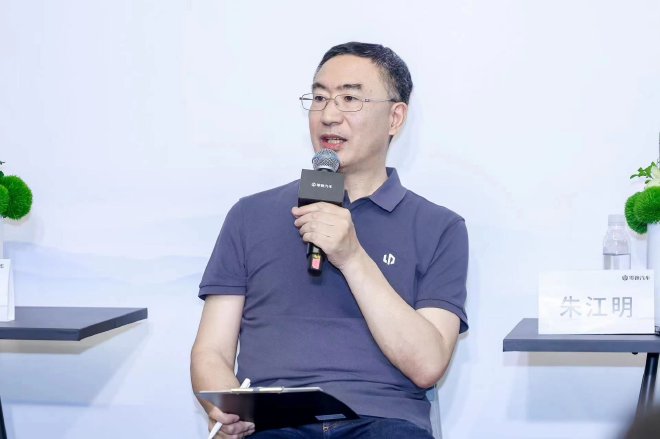
Next year, we will launch three B-series cars, mainly targeting the price range of 100,000 to 150,000. In 2026, we may focus on promoting three products in the price range around 200,000. By concentrating resources in one price range, our products will have a competitive edge. Zero Run will continue to steadily implement our strategy and we will have a chance to succeed. Reporter: Where does the advantage of LEAP 3.0 technology architecture lie? Many companies are investing in supercomputing centers, how does Zero Run plan in this area? Cao Li: The LEAP 3.0 architecture is an advancement from the previous version, upgrading the platform to 800V high-voltage fast charging. We have also improved the pricing and performance of intelligent driving to be fully equipped within 200,000. Therefore, the core advantage of LEAP 3.0 lies in our design of the entire architecture and the integration of self-developed technology into our products.
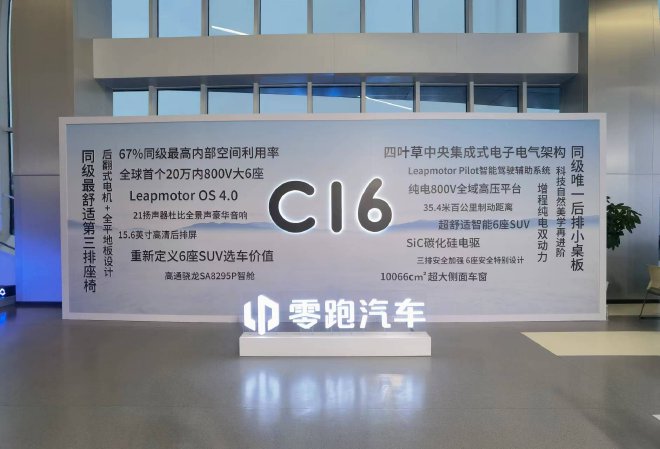
Zhu Jiangming: Now China’s supercomputers seem to be in a bit of an arms race, with computing power being absolutely excessive and depreciating quickly as a heavy asset. Zero Run has always focused on light asset operation, so we may rent computing power instead of investing in it. Currently, Zhejiang and local governments will coordinate and plan resources uniformly, and I think computing power will not be lacking in the future. Journalist: After the listing of the C16, what are your expectations for Zero Run’s sales? Are you satisfied with Zero Run’s sales performance in the first half of the year? What are your expectations for the second half of the year? Zhu Jiangming: In mature countries, people tend to consume more rationally, and it is a consumption driven by necessity. In the long run, we believe that cars are durable consumer goods and more of a tool in the future. Therefore, looking at the industry from a long-term perspective, using cars as a means of transportation may have more advantages. Our brand positioning aims to provide users with higher configuration, better quality, and affordable products. Regardless of the temptations or profit margins, Zero Run will always stick to making cars a mass consumer product. Of course, we will continue to meet more user requirements for this mass consumer product. In the future, we will continue to view cars as consumer goods, which may be more advantageous. This is our direction, and we will not change. We aim to offer the highest configuration and best quality products in the same price range.
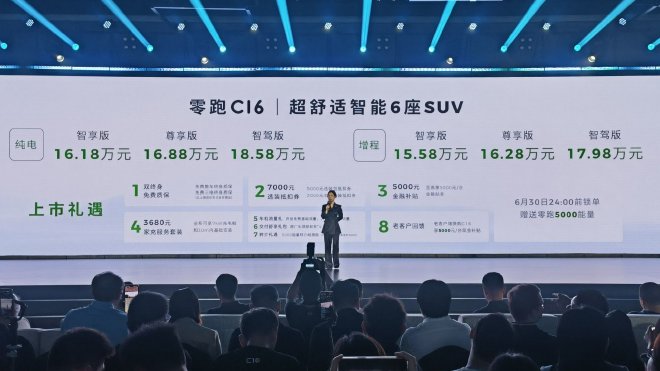
During January to May, Zeropao remained in the top three of new car forces. In June, the brand ranking is around 7th, 8th, or 9th place. With the addition of the C16, our position may improve. Expectations for sales are higher in the second half of the year. Reporter: Earlier at the press conference, you mentioned auctioning luxury cars. Is this a joke or are you really preparing for this? I do plan to use the C16 as my future commuter car. It offers a great riding experience, comparable to many luxury cars. I have a Mercedes-Benz S that is over ten years old, a Porsche Cayenne that is also over ten years old, and an Alfa Romeo that is about six or seven years old. I intend to auction these three cars at the right time and use the C16 for my daily commute until the next Zeropao D series with 6 seats is released. Reporter: How will sales continue to focus on channel development in the second half of the year? Any further actions planned? Zhu Jiangming: Our main task this year is to adjust the structure of our channels by increasing our network presence. Our direction is to focus on the “1+N” model, with more presence in automotive cities as the “1”, using 4S stores for display, sales, delivery, and service. Develop a second circle around it, known as “N,” which includes small car dealerships or supermarkets, all under the same management. We aim to reduce our investors and increase the number of car cities or commercial districts. By the end of this year, we hope to have over 300 car cities, also known as “1,” or 4S stores, and expand smaller car commercial districts in urban showrooms. Our goal is to increase the total number of outlets from around 500 to 800 by the end of the year, focusing on expanding into cities without outlets and in smaller cities with significant sales. The rapid development of new energy is a priority as market share for new energy vehicles has reached 52%. We must accelerate our progress. Reporter: How do you view the intense competition and price wars in the industry? Will there be pressure on Zero Run as other car companies engage in direct competition? Zhu Jiangming: Price wars will continue for the next three years, competition will remain intense as the entire landscape is still uncertain. The transition to new energy vehicles will be completed within three years, with traditional fuel vehicles decreasing to less than 10%. The focus will shift to hybrid, plug-in hybrid, and electric models. Therefore, in the process of fierce competition, everyone is definitely striving to secure their position, competition is inevitable in these three years.
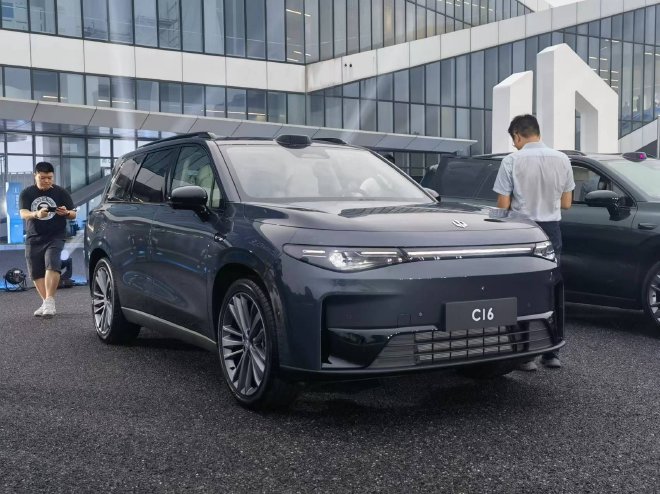
As ZERO RUN, we stick to our steady path, at our own pace and rhythm, with enough reserves and capabilities to handle price wars. Today’s C16 price reflects our ability to offer higher configuration, higher quality, and affordable products. We hope all our future products will be as competitive as C16. Reporter: How do you ensure our technological competitiveness or leadership advantage without high R&D costs compared to other competitors? Zhu Jiangming: Our annual R&D investment is much lower than several friendly competitors, leveraging our existing accumulation of organizational and technical capabilities. Since our establishment in 2015, our founding team had good software, technical, and R&D management foundations, saving us time and resources. Our nine years of technical reserves and accumulation were completed without taking detours. In addition, our R&D executive team has been relatively stable, saving us resources, including our existing technical reserves. Therefore, in terms of output efficiency, ZERO RUN’s R&D efficiency is definitely the highest. New car models in the first quarter are relatively few, with the cost being lower due to the holiday season, and there will definitely be growth in the second and third quarters. Reporter: Does C16 have plans to go overseas? There are reports that ZERO RUN has started trial production in Europe. If ZERO RUN enters production in Europe in the future, what kind of supply chain model will be chosen?
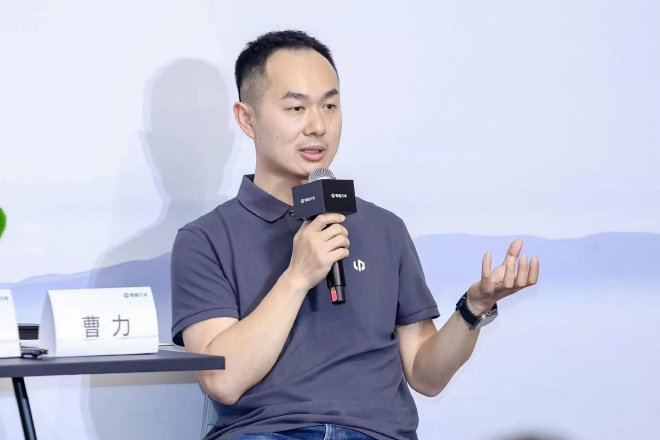
Cao Li: The LEAP 3.0 architecture models are designed globally, but the C16 is currently only planned for the domestic market. There is not as much demand for 6-seater models in Europe, South America, or even the Middle East as there is in China. Especially in Europe, so we currently do not have an overseas version. However, we can launch an overseas version anytime when the opportunity arises. The current period is very sensitive for Chinese vehicles going abroad. This is an obstacle and challenge for Chinese car companies, but I think Leap has certain advantages. After cooperating with Stellantis, Stellantis’ global manufacturing resources can be utilized, taking into account policies and economics. We are only taking a few T03 models to overseas factories to assess adaptability and assembly feasibility. We are currently in the evaluation stage. Reporter: How does Leap view the competitive relationship brought by entering the lower-tier market with other brands? What are Leap’s advantages when prices are similar? Zhou Ying: First, Leap has been focusing on the price range of 150,000 to 200,000 since the C11. Each product deepens our understanding of the niche market and strengthens our supply chain integration capabilities in this market. This is our accumulation of understanding and resources in the niche market. Secondly, we already have a strong user base in the segmented market, which may not be possessed by new competitors. The most important thing is the overall product concept of Zero Run, making the core components the best through self-development, using the best suppliers for key components, and adhering to cost pricing. This business model should be the clear positioning of Zero Run products that we have already established. So far, not many people have been able to compete with Zero Run in this segmented market. Reporter: C16 is Zero Run’s first 800V vehicle. Does Zero Run have any plans for supercharging station construction? Cao Li: Regarding supercharging, the technology is simple. The decision to invest in it is being made. While working on the 800V C16 project, the national standard charging current is 250A, and the charging power can reach up to 2C or 2.2C to maximize its charging power utilization. However, if we want faster 4C supercharging, we will have to invest in charging stations ourselves, and the vehicle will exceed 250A, leading to increased costs. Our research found that over 70% of fast charging piles in Zhejiang are between 750V and 1000V. With a vehicle voltage of 800V and a charging capacity of 2.2C, it can maximize the use of current charging facilities.
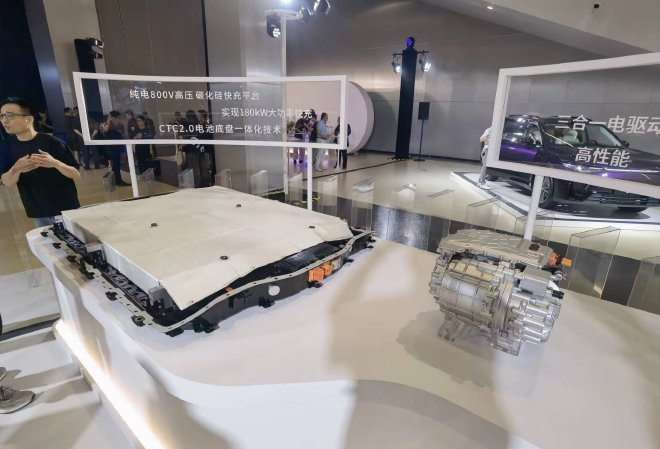
朱江明: From the perspective of charging stations, currently 2.2C 800V has the most charging resources, with 70% of charging stations in Zhejiang province able to achieve this, while achieving 4C is rare, with 10% unable to do so, which is a high configuration, without charging stations being used. Reporter: How will Lixiang’s layout in the European market in the future contribute to our performance in China? What kind of driving effect will European vehicle brands have on China? Cao Li: This year, we will comprehensively expand in Europe, South America, Asia-Pacific, and the Middle East and Africa in terms of products. In Europe, the focus will be on small and medium-sized vehicles, as vehicles like the C10 are already considered large, belonging to the C and D levels. Therefore, there will be some differences in terms of products, and our positioning in Europe will still emphasize Lixiang’s genes, which are our technology and intelligence. Compared to traditional European automotive products, Chinese automotive products have a strong advantage in terms of intelligence, so we will continue to strengthen our technological and intelligent labels. As for whether it will contribute to our brand or profits in China, currently, profits in Europe are better than in China, but in the long run, it will become more competitive. Many European car companies have already started to become more competitive, whether in terms of price, technology, or products. From another perspective, such as the brand level, I believe everyone will definitely have a certain perception. After we expand in Europe, especially after cooperating with Stellantis, if our Lixiang International sales can gradually meet our expectations, it will definitely contribute to the brand. Reporter: Where will Lixiang position its intelligent driving strategy internally? 朱江明: In terms of intelligent driving, Lixiang has mostly adopted a follow-up strategy in the previous stage. In the next three to five years, I think intelligent driving will become more mature and bring more fun to driving. Therefore, since last year, we have invested more manpower in the entire intelligent driving field. We currently have a team of over 400 people in intelligent driving. Static BEVs will be available in July, and dynamic BEVs will be available in October or November. So our overall technological capabilities are gradually approaching the top tier, and we believe it is time to make bigger investments to enter the top tier. In the next one to two years, Zero Run’s products are expected to make rapid progress in autonomous driving capabilities. Reporter: Is Zero Run worried that some new consumers will use “Ideal Replacement” to describe Zero Run? Cao Li: Ideal Replacement is not bad, but there is a difference in product positioning between us and Ideal. Our main car positioning is below 200,000, but it does not mean that below 200,000 we can accept having all functions and performance worse than them, so we definitely benchmark the best industry functions and product quality. The key to achieving this is to spend money where it matters. I think our products will definitely approach excellent products in terms of performance and product power, but the concept of price is different. However, being able to replace is definitely a good thing for Zero Run. Zhu Jiangming: For example, there may be some users who are used to buying brands like Genia and Chanel occasionally buying Uniqlo, they may also buy C16, but after using it they feel no different, at this point they become loyal fans of Zero Run. Reporter: I heard that Zero Run will release a 100,000 yuan (13760$) A-class car next year, which may be equipped with lidar. Will this pose a challenge to our cost control? Zhu Jiangming: Our B-series models next year, priced between 100,000 and 150,000, may have lidar in high-end models, as well as high-performance autonomous driving chips because we believe that intelligent driving is definitely a big trend in the future. The 100,000 level must also have such functions, so we are also actively working on it. We hope that within the price range that everyone is looking forward to, we can offer some high-end intelligent configurations, including lidar, and high-performance AI chips. So we do have this plan, and we hope that everyone can pay attention. We will also unveil the first B-series car, an SUV, at the French car show in October this year, by then a lot of information will be clearer. Reporter: How do you view the future development space of overseas factories and the current model of Zero Run? Zhu Jiangming: The top ten global car companies basically need to achieve annual sales of over 3 million vehicles, so as a car company, at least more than 50% of the market needs to be overseas in order to easily achieve sales of over 3 million.

To achieve this, overseas is very important. Our cooperation with Stellantis will accelerate our entry into overseas markets, whether it is the construction of outlets, service systems, or the impact of geopolitical factors on tariff trade barriers. Our cooperation model will bring more benefits. We also hope that this cooperation will enable us to enter overseas markets faster than other domestic automakers in the next three years.
Reporter: What are Zero Run’s sales expectations for the C16 in the future? Zhu Jiangming: With the current situation of second children, the demand may be more urgent. So we believe that the market size will definitely grow larger. The advantage of the Zero Run C16 is its easy handling and compact size with a wheelbase of only 2.82 meters, making it very easy to drive like a regular car. It also offers great seating space, with the first and second rows reaching the comfort level of a business class cabin, and the third row at least reaching the level of an economy class. As a family car, it is best to meet everyone’s needs. It is a versatile product, not necessarily bigger is better, just enough is good. So we are very excited about the C16, as it is a versatile model that can meet the needs of more people. The C16 is suitable for both business and home use, and can also serve as a reception vehicle for small businesses or small bosses, making it a very comprehensive car. Therefore, I believe the C16 definitely has a very promising future.